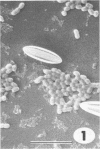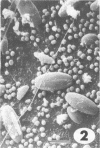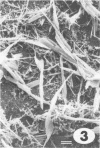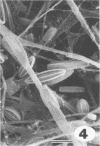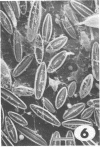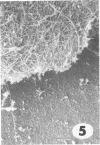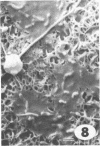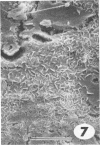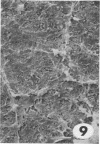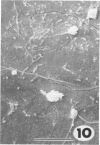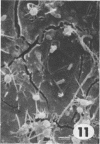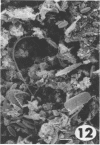Abstract
Glass and metal substrates exposed to subtropical seawater exhibit a characteristic succession of periphytic microorganisms. Substrates which are biologically and physically inert (glass and stainless steel) fouled rapidly and produced a complex, two-tier microfouling layer. Characteristic microorganisms were bacteria, fungi, choanoflagellates, diatoms, ciliates, and microalgae. Active substrates (brass and copper-nickel alloys) were selective for bacteria which secrete extracellular mucoid material, fouled at a slower rate, and were characterized by a less diverse microfouling community. Substrate appears to influence microfouling at all stages of development, especially in the early stages of substrate conditioning, and primary film formation. Primary films may insulate periphytic microorganisms from toxic substrates.
Full text
PDF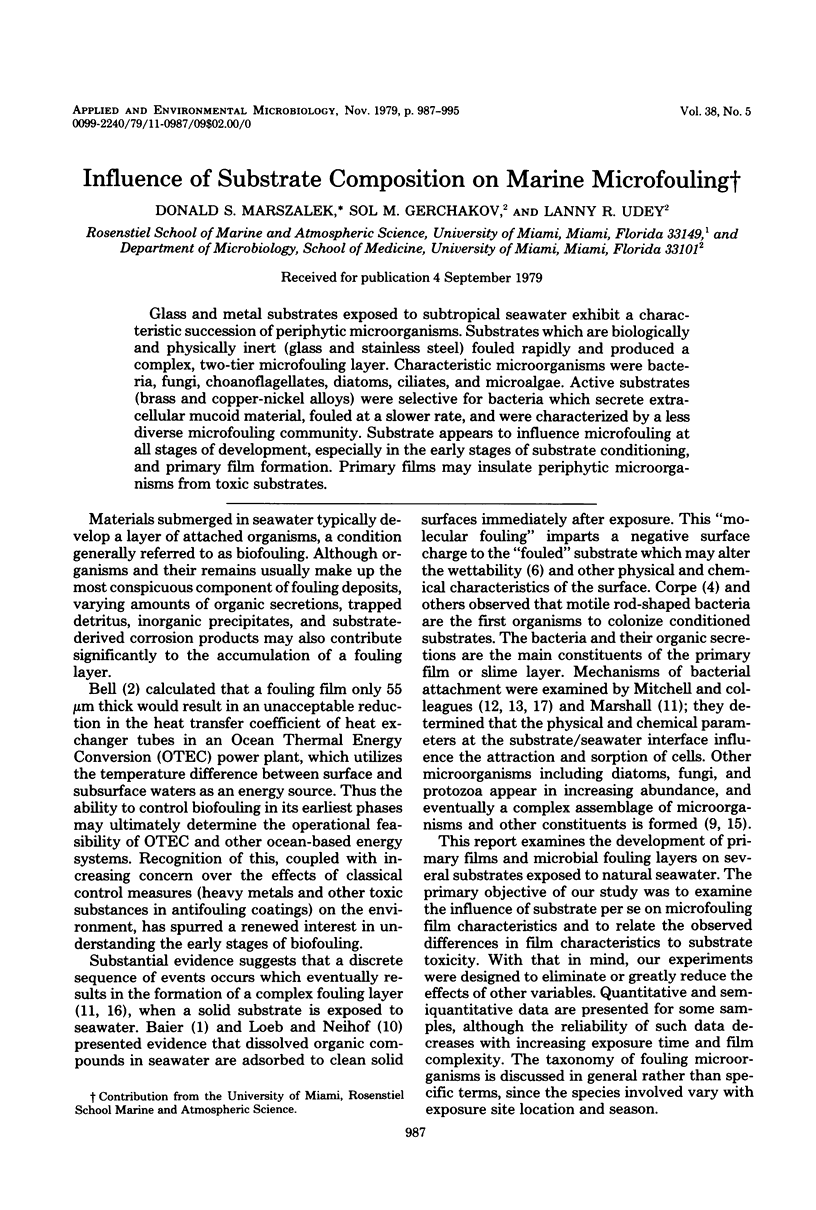
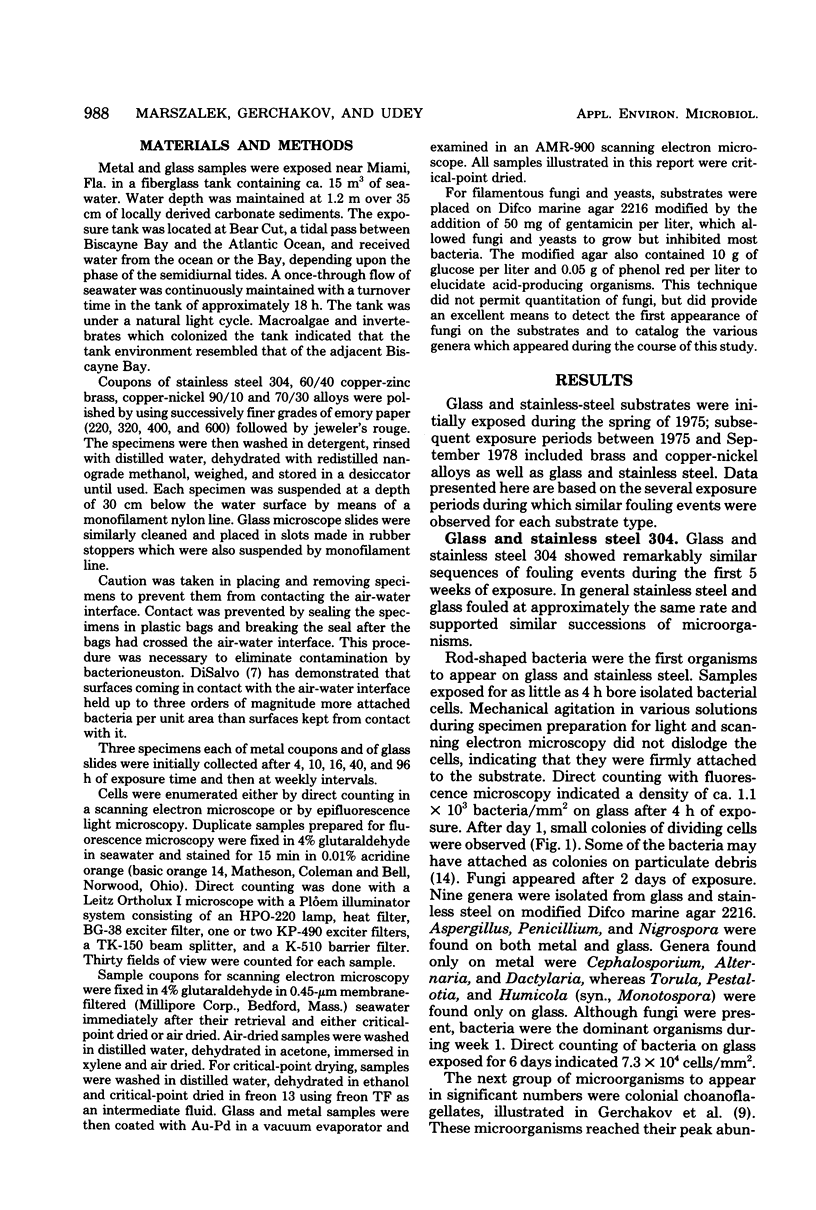
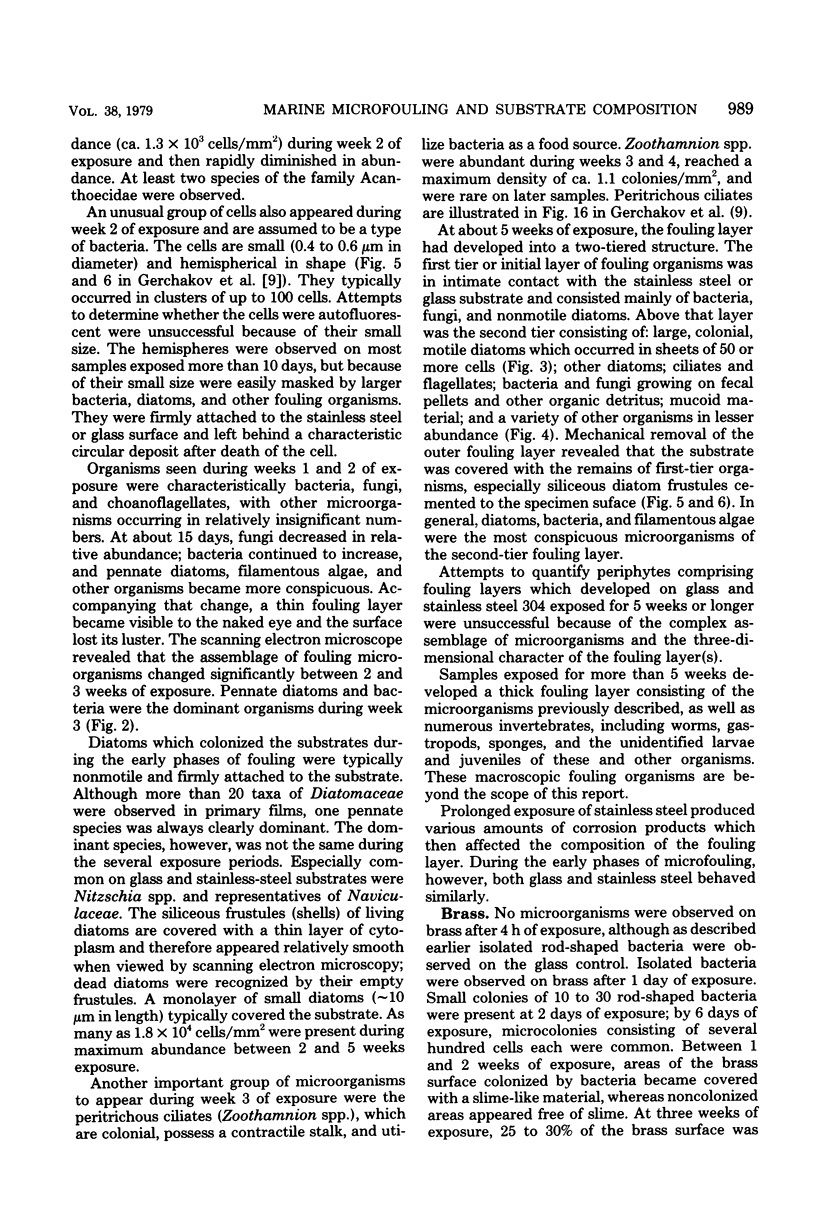
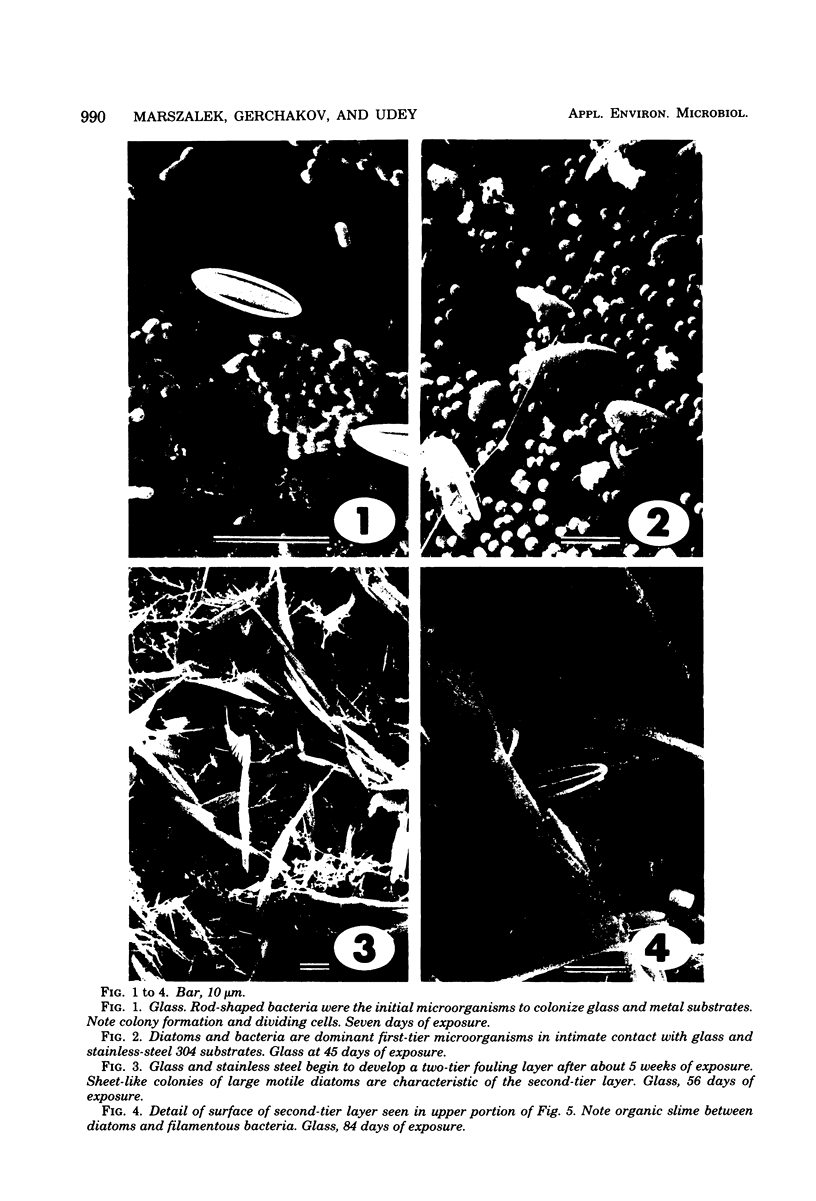
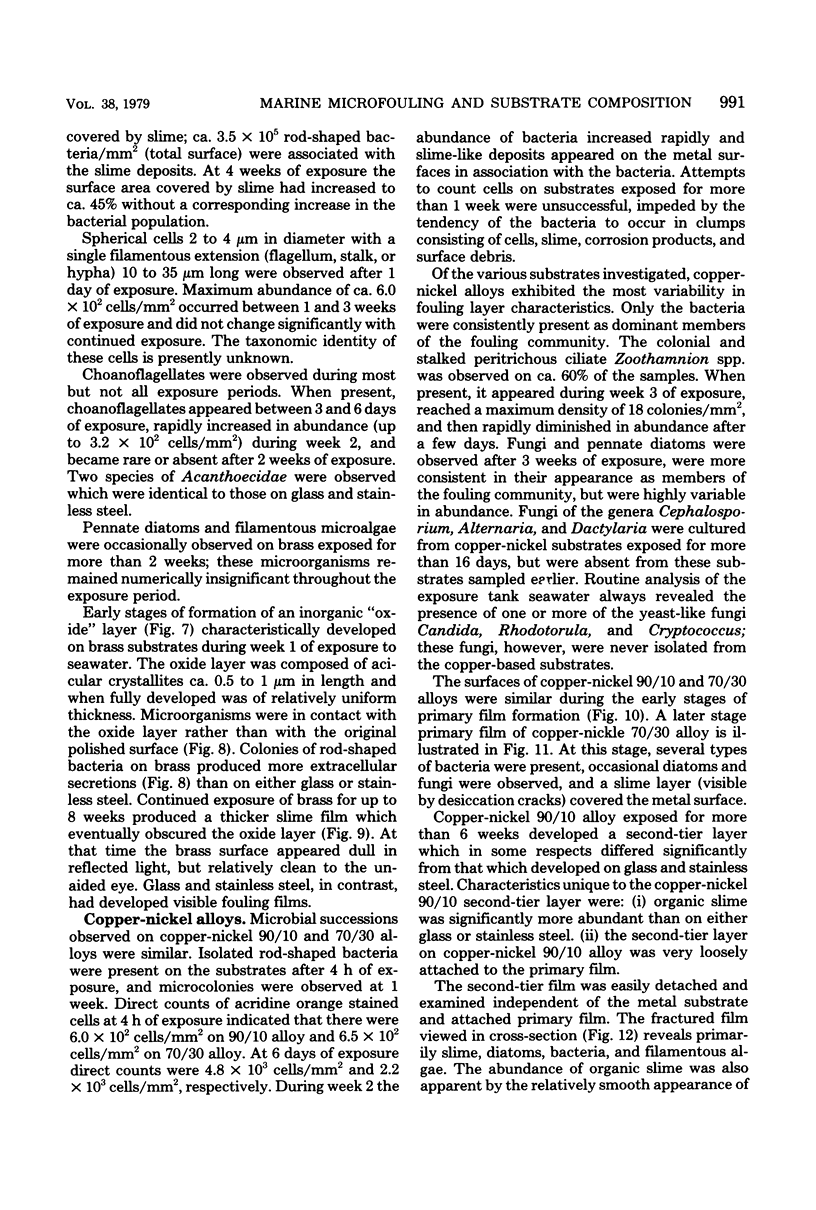
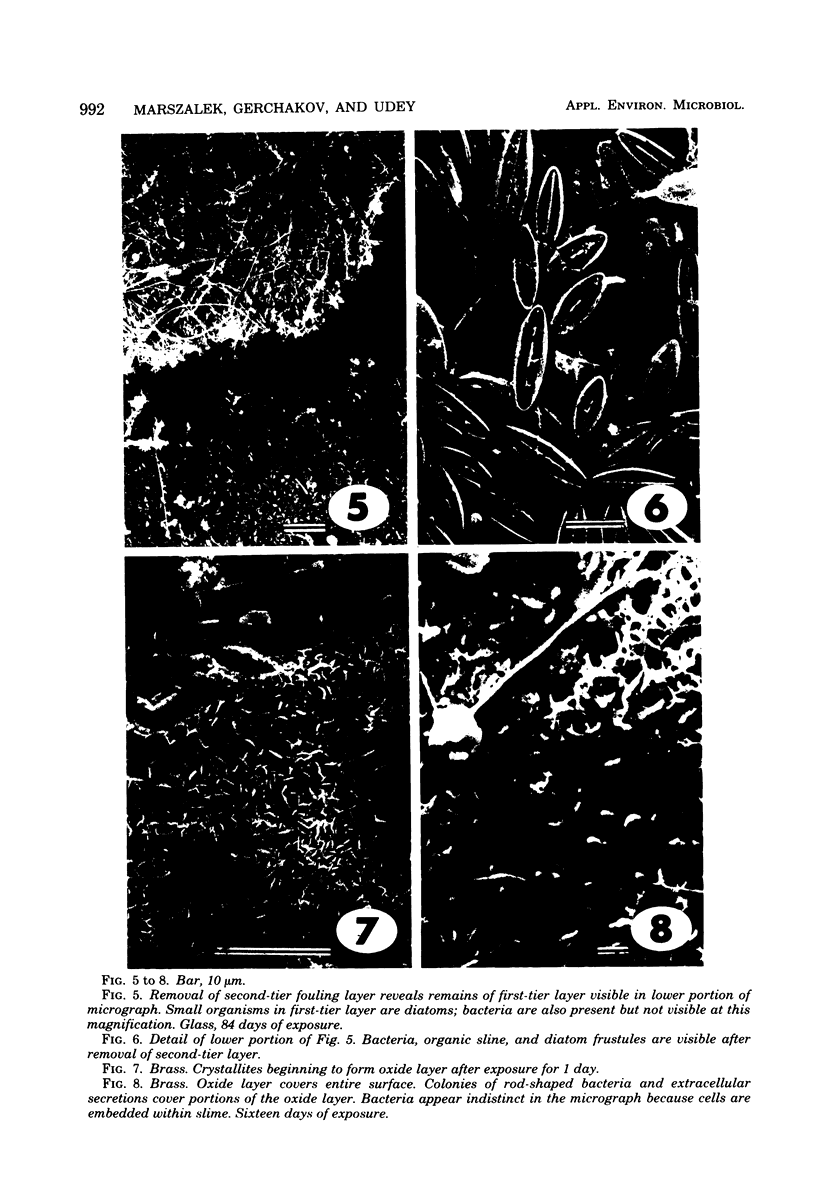
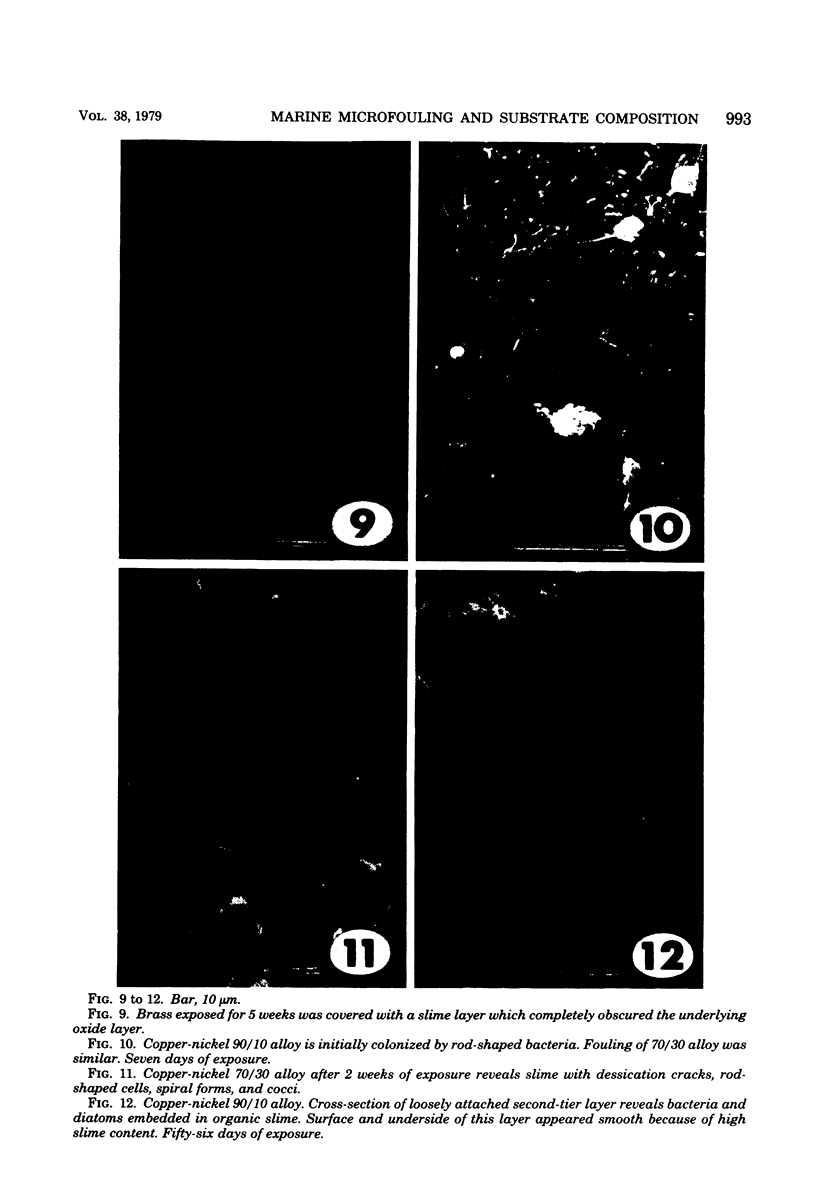
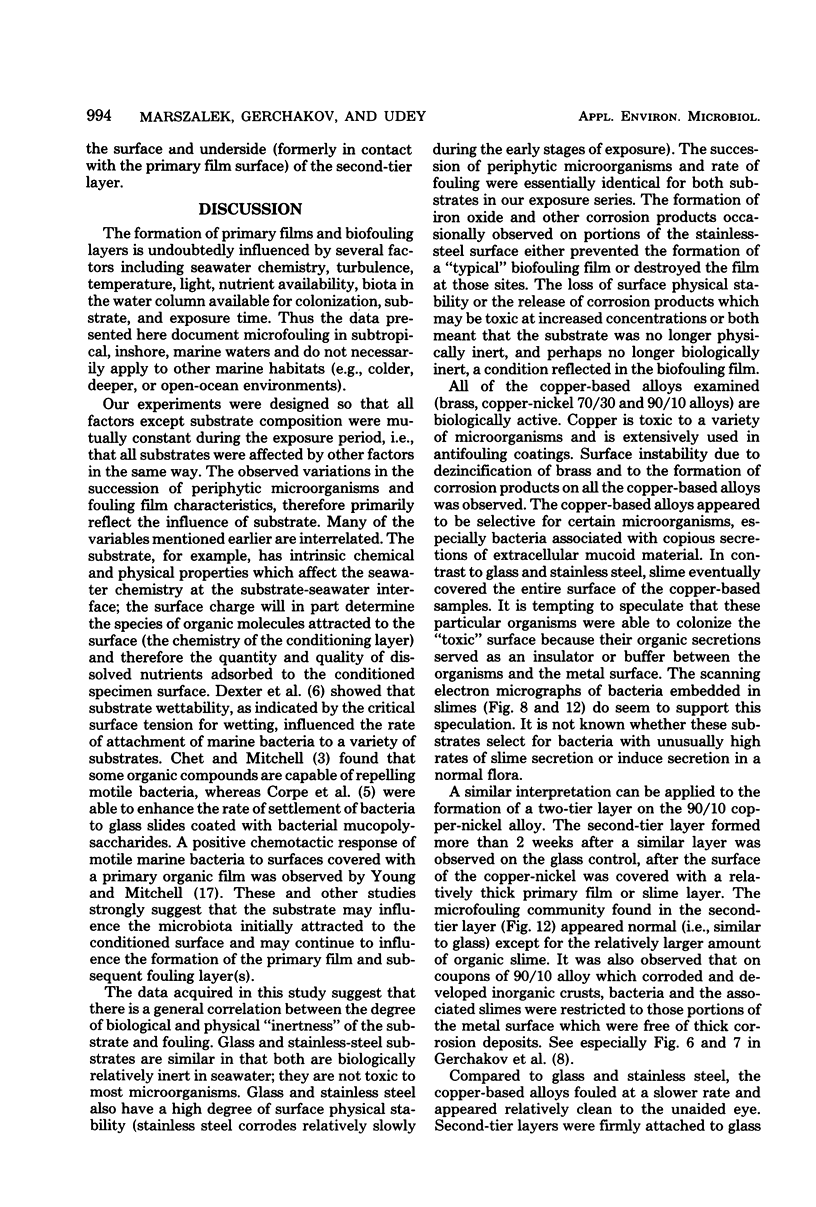
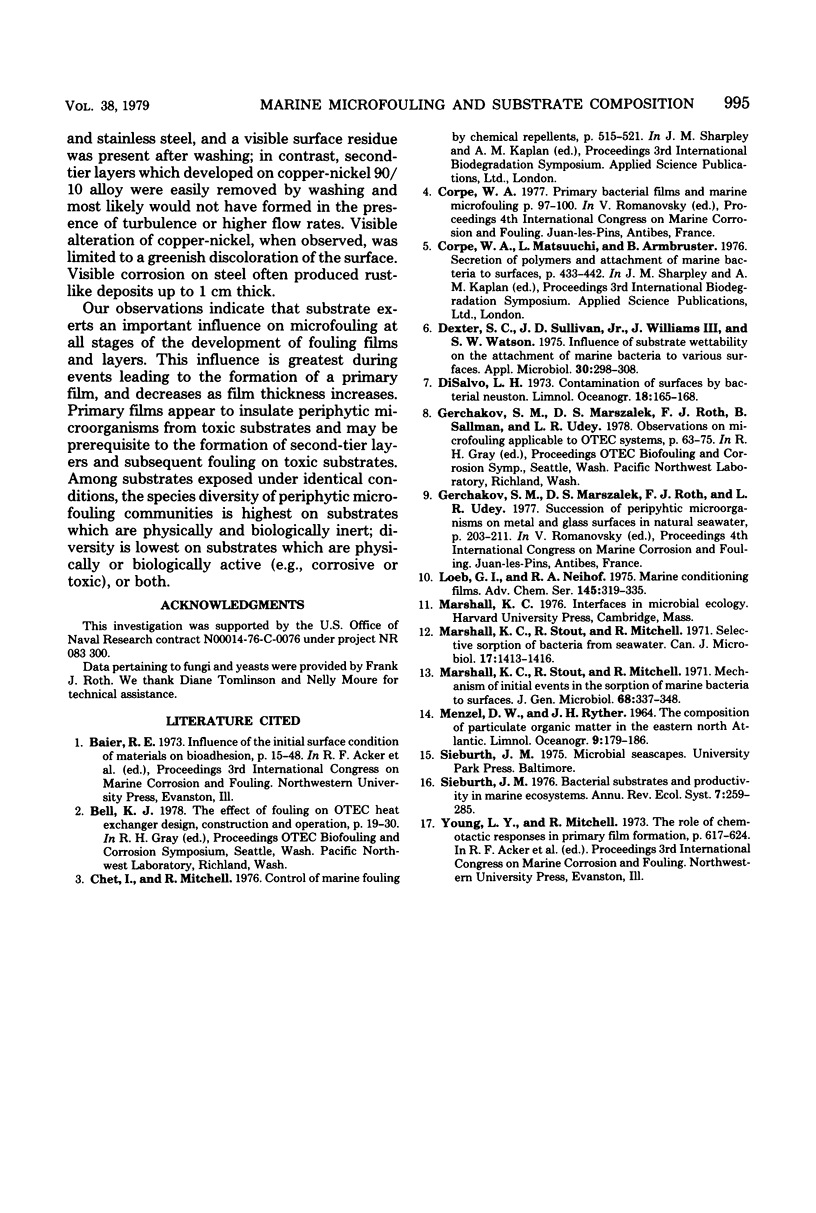
Images in this article
Selected References
These references are in PubMed. This may not be the complete list of references from this article.
- Dexter S. C., Sullivan J. D., Williams J., Watson S. W. Influence of substrate wettability on the attachment of marine bacteria to various surfaces. Appl Microbiol. 1975 Aug;30(2):298–308. doi: 10.1128/am.30.2.298-308.1975. [DOI] [PMC free article] [PubMed] [Google Scholar]
- Marshall K. C., Stout R., Mitchell R. Selective sorption of bacteria from seawater. Can J Microbiol. 1971 Nov;17(11):1413–1416. doi: 10.1139/m71-225. [DOI] [PubMed] [Google Scholar]
- Steffen C., Menzel J., Zeitlhofer J., Smolen J., Lanzer G. Experimental arthritis induced by granulocyte collagenase. Scand J Rheumatol. 1980;9(3):179–186. doi: 10.3109/03009748009098155. [DOI] [PubMed] [Google Scholar]



